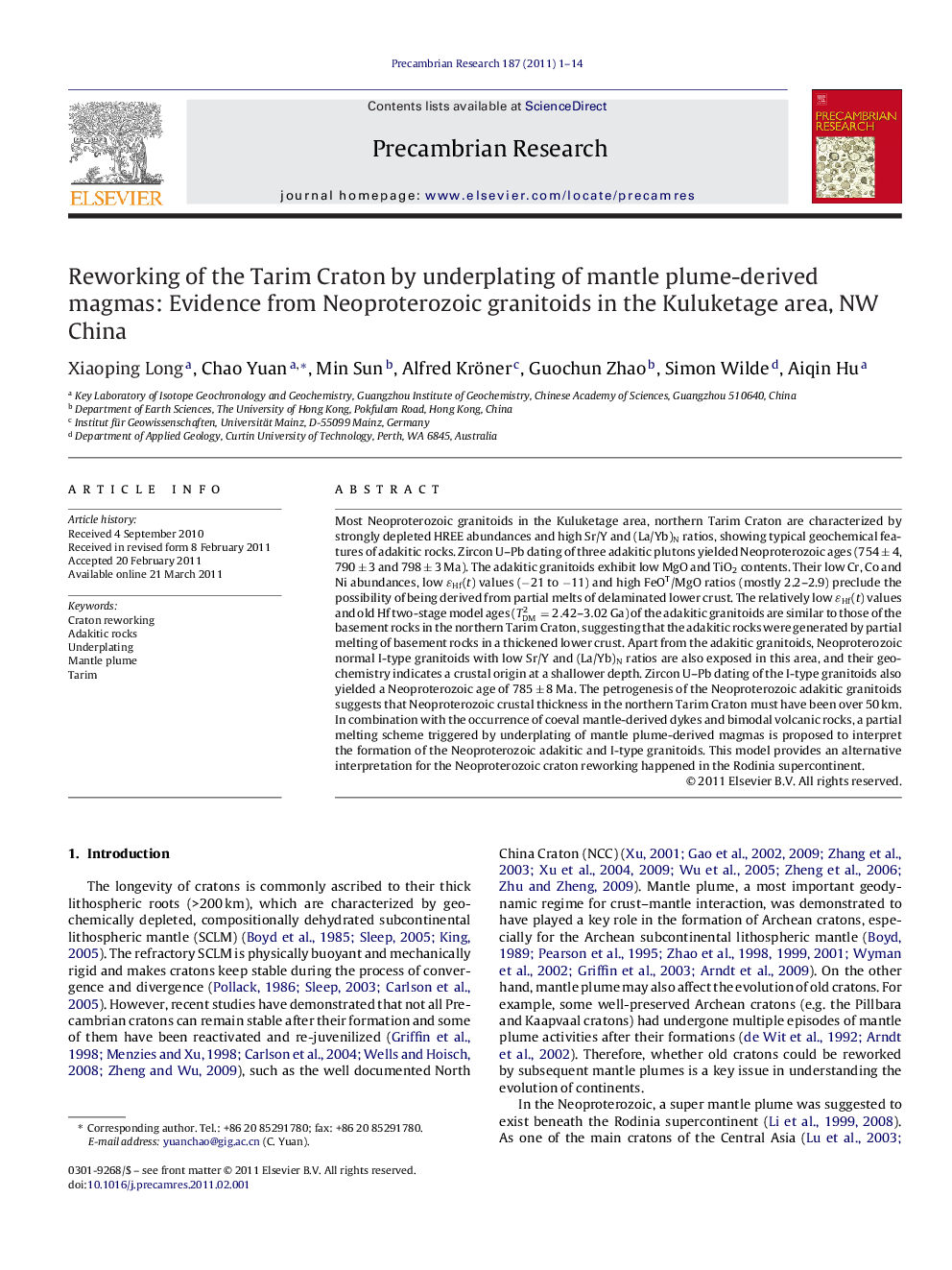| کد مقاله | کد نشریه | سال انتشار | مقاله انگلیسی | نسخه تمام متن |
|---|---|---|---|---|
| 4723835 | 1639670 | 2011 | 14 صفحه PDF | دانلود رایگان |

Most Neoproterozoic granitoids in the Kuluketage area, northern Tarim Craton are characterized by strongly depleted HREE abundances and high Sr/Y and (La/Yb)N ratios, showing typical geochemical features of adakitic rocks. Zircon U–Pb dating of three adakitic plutons yielded Neoproterozoic ages (754 ± 4, 790 ± 3 and 798 ± 3 Ma). The adakitic granitoids exhibit low MgO and TiO2 contents. Their low Cr, Co and Ni abundances, low ɛHf(t) values (−21 to −11) and high FeOT/MgO ratios (mostly 2.2–2.9) preclude the possibility of being derived from partial melts of delaminated lower crust. The relatively low ɛHf(t ) values and old Hf two-stage model ages (TDM2=2.42–3.02 Ga) of the adakitic granitoids are similar to those of the basement rocks in the northern Tarim Craton, suggesting that the adakitic rocks were generated by partial melting of basement rocks in a thickened lower crust. Apart from the adakitic granitoids, Neoproterozoic normal I-type granitoids with low Sr/Y and (La/Yb)N ratios are also exposed in this area, and their geochemistry indicates a crustal origin at a shallower depth. Zircon U–Pb dating of the I-type granitoids also yielded a Neoproterozoic age of 785 ± 8 Ma. The petrogenesis of the Neoproterozoic adakitic granitoids suggests that Neoproterozoic crustal thickness in the northern Tarim Craton must have been over 50 km. In combination with the occurrence of coeval mantle-derived dykes and bimodal volcanic rocks, a partial melting scheme triggered by underplating of mantle plume-derived magmas is proposed to interpret the formation of the Neoproterozoic adakitic and I-type granitoids. This model provides an alternative interpretation for the Neoproterozoic craton reworking happened in the Rodinia supercontinent.
.Figure optionsDownload as PowerPoint slideHighlights
► Age and petrogenesis of the Neoproterozoic granitoids in the northern Tarim Craton.
► The continental crust in the area was once thickened over 50 km during the Neoproterozoic.
► Underplating of plume-related magmas provides a valid regime for craton reworking.
► Neoproterozoic plume reactivates the old cratons in the Rodinia supercontinent and results in its breakup.
Journal: Precambrian Research - Volume 187, Issues 1–2, May 2011, Pages 1–14